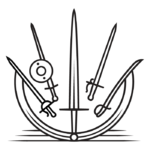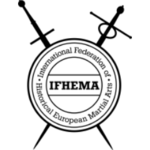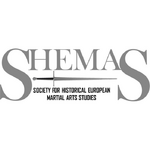Recent Feature Additions
|
|
Our fundraising drive ended on Friday, and I've clean run out of synonyms for "incredible" to use in these posts. After PayPal fees, we took in $3,611.93, over seven times our initial goal. This generous outpouring from our users has vastly exceeded any plans we've made for projects, so at the moment the bulk of it will sit in an account while we investigate new digital scan acquisitions over the next several months. (I've already put in a few inquiries and settled one agreement that was pending before the fundraiser, but until this point I've been reaching out to institutions one at a time as I get ready to work on the associated index page.)
All told, we received 85 separate donations, including nineteen at the sponsor level. In particular I'd like to highlight our top five sponsors: MARS Swordfighting, Purpleheart Armoury, Esfinges, the Bramble Schoole of Defence, and Iron Gate Exhibition. Together, these five organizations--schools from Europe and the US, a leading HEMA supplier, an international network for female fencers, and a major HEMA event, illustrate in some small way the breadth of our community. I'll be getting in touch with them and all of the other donors to find out if you'd like your name listed in the donor list or would prefer to remain anonymous. If you know that you donated $100 or more, please decide if you'd like your organization represented in the sponsor list, and if so, prepare some sort of logo for me to potentially use.
To return to my initial refrain, the outcome of this year's fundraiser was beyond anything we ever expected. I thank all of you, and I'm sure the HEMA Alliance general council does as well (since this removes a big item from their annual budget ;)). Here's to another year of exciting manual research!
Michael Chidester (Contact)
Wiktenauer Director
HEMA Alliance, WMAC
21:11, 3 February 2014 (UTC)
P.S. If you missed the window for the fundraiser, fear not! The donate button at the bottom of the sidebar will remain where it's always been, and donations are welcome at any time. If you donate over $100 in the next week or so while I'm still figuring out the while sponsor thing, I'll even include you in the list.
|
|
|
What's New?
|
|
Paulus Kal was a 15th century German fencing master. He wrote that he studied martial arts under Hans Stettner von Mörnsheim, and was an initiate of the tradition of Johannes Liechtenauer. He was also attached as Schirrmeister to three different courts in his career, serving in various military capacities including commanding men in at least three campaigns. Perhaps his most significant legacy is an honor role of deceased masters included in the Munich version of his fencing manual, which he styled the Society of Liechtenauer (Geselschaft Liechtenauers). While several of these masters remain unknown, the majority wrote treatises of their own and Kal's list stands as an independent confirmation of their connection to the grand master. Kal's treatise is interesting in that it represents the first attempt to illustrate Liechtenauer's Record (Zettel).
Little is known of Kal's early life, but from 1440 to ca. 1449 he served Ludwig IV "the Gentle" of the House of Wittelsbach, Count Palatine of the Rhine. In 1448, while in the count's service he participated in the defense Nuremberg, commanding a unit of wheel cannons below the gates. The Nuremberg Council notes from 17 March 1449 mention that he had broken the peace of the city at that time by drawing his weapons.
Kal entered the service of Ludwig IX "the Rich" of the House of Wittelsbach, Duke of Bavaria-Landshut, on 29 September 1450. In 1461, he is mentioned commanding a unit of 12 marksmen.[citation needed] From 1465 to 1475, he seems to have also maintained a secondary occupation as a toll collector in Dingolfing. In November 1468, he participated in military actions on the castle Saldenburg, which was successfully taken on 4 December. Shortley thereafter, in ca. 1470, Paulus Kal created a second, expanded version of his fencing manual for Ludwig IX, the current Cgm 1507 (as well, possibly, as the MS 1825). Kal is listed as a guest at the wedding of Ludwig's son George, and continued in the duke's service until his death on 18 January 1479.
On 12 February 1480, Paulus Kal entered the service of Sigismund of the House of Habsburg, Archduke of Austria and Tyrol. Kal acted as one of the archduke's witnesses at a number of interrogations held on 17 October 1485 in Innsbruck, related to the witch trials being conducted by Heinrich Kramer at that time. This is the final time that Kal's name appears in the histories. Several copies of Kal's treatise were created during the 1480s and 90s, including the extensive MS KK5126, but it is unknown if he directly commissioned any of them.
In total, Paulus Kal's teachings are preserved in at least six manuscripts written between 1440 and 1514. The probable archetype, Cgm 1507, includes brief explanations in German for most devices (many extracted from Liechtenauer's record). There are four other text-less versions, and these were probably copied from the 1470 version. A sixth version was sold at auction in Italy during the 20th century as individual leaves; this copy contains single-word captions in Latin or Italian and was likely based on one of the four without text. In addition, Paulus Hector Mair based content in several sections of the Munich version of his Opus Amplissimum de Arte Athletica on Kal's treatise. It appears that the copy he used for this was textless, and so he added his own extensive commentary on the images. The precise set of images Mair drew upon do not appear in any of the six extant manuscripts, which may signify that there was once a seventh copy of Kal's work which has since been lost.
(Read more...)
|
|
|
|



































